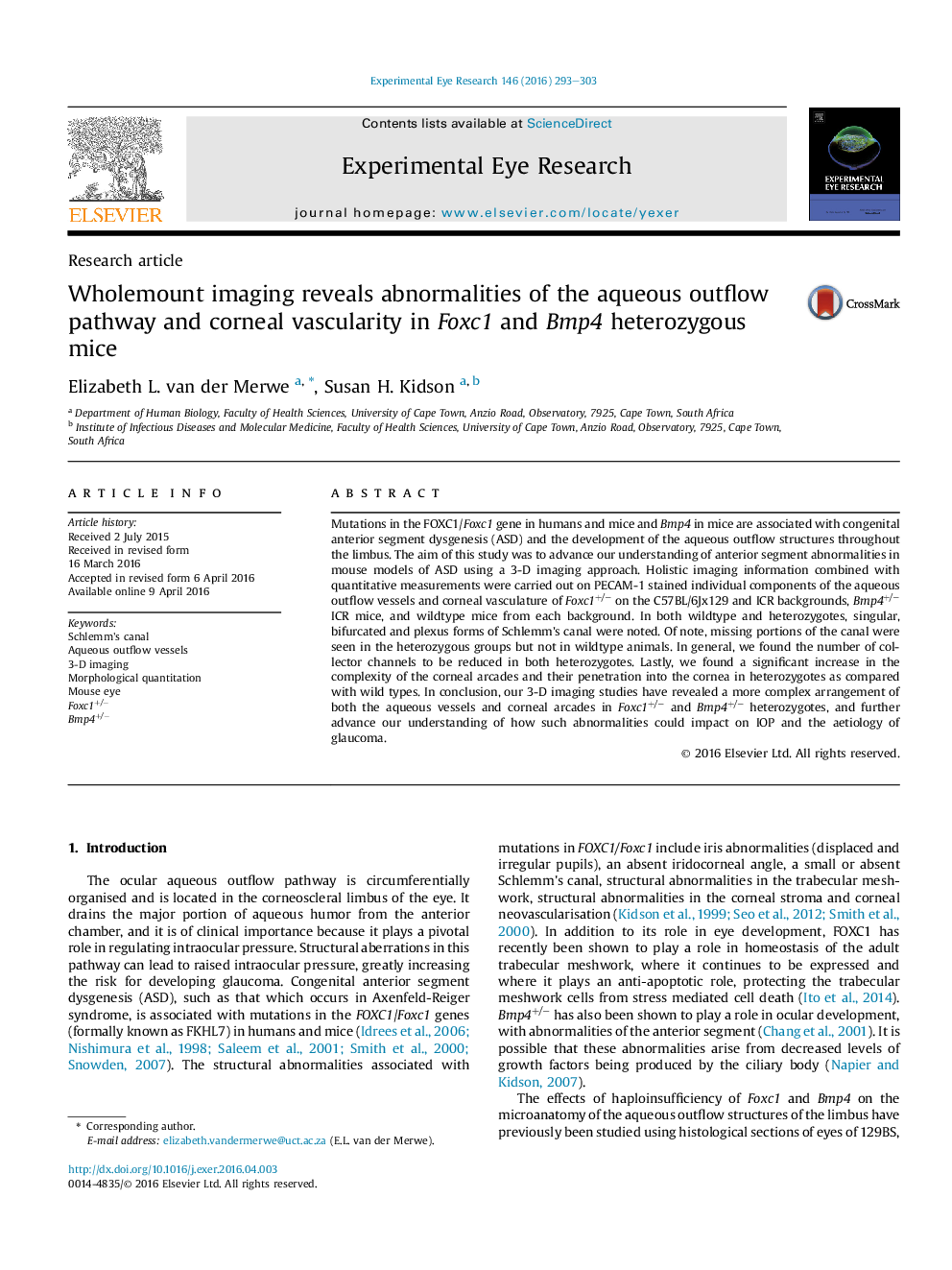| Article ID | Journal | Published Year | Pages | File Type |
|---|---|---|---|---|
| 6196322 | Experimental Eye Research | 2016 | 11 Pages |
â¢Novel, subtle differences of limbal aqueous and blood vessels revealed by 3-D imaging.â¢Corneal wholemounts of wildtype, Foxc1+/â and Bmp4 +/â mice were stained with PECAM-1.â¢Greater variability and reduced width of Schlemm's canal shown in heterozygous mice.â¢Heterozygous mice have reduced number of collector channels.â¢Corneal arcades more are complex and extend deeper into the cornea in heterozygotes.
Mutations in the FOXC1/Foxc1 gene in humans and mice and Bmp4 in mice are associated with congenital anterior segment dysgenesis (ASD) and the development of the aqueous outflow structures throughout the limbus. The aim of this study was to advance our understanding of anterior segment abnormalities in mouse models of ASD using a 3-D imaging approach. Holistic imaging information combined with quantitative measurements were carried out on PECAM-1 stained individual components of the aqueous outflow vessels and corneal vasculature of Foxc1+/â on the C57BL/6Jx129 and ICR backgrounds, Bmp4+/â ICR mice, and wildtype mice from each background. In both wildtype and heterozygotes, singular, bifurcated and plexus forms of Schlemm's canal were noted. Of note, missing portions of the canal were seen in the heterozygous groups but not in wildtype animals. In general, we found the number of collector channels to be reduced in both heterozygotes. Lastly, we found a significant increase in the complexity of the corneal arcades and their penetration into the cornea in heterozygotes as compared with wild types. In conclusion, our 3-D imaging studies have revealed a more complex arrangement of both the aqueous vessels and corneal arcades in Foxc1+/â and Bmp4+/â heterozygotes, and further advance our understanding of how such abnormalities could impact on IOP and the aetiology of glaucoma.
